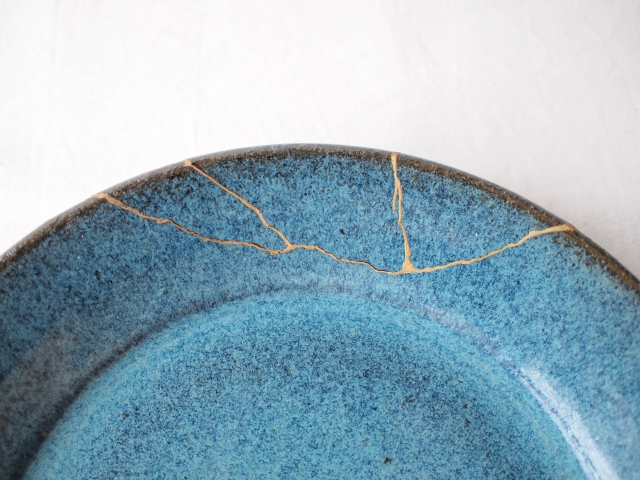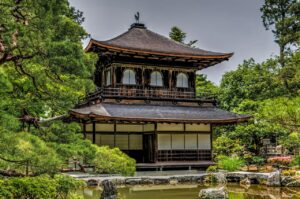JAPAN IN
ONE MINUTE 
~ Understanding the Beauty of Imperfection: “Wabi sabi” in Everyday Life ~
Today, let’s talk about “Wabi sabi“, my favorite Japanese aesthetic.
It’s all about finding beauty in imperfection, impermanence, and incompleteness.
Even for Japanese people, it’s hard to define clearly.
Huh? Finding beauty in things that are incomplete?
Hmm… I don’t really get it.
It values simplicity, things that are asymmetrical, and the natural aging of materials.
Rather than perfection, “Wabi sabi” teaches us to appreciate things that are changing, fading,
or even breaking, as part of nature’s flow.
Oh, that’s interesting. In Sweden, we also like simple and natural designs,
but the idea of finding beauty in things getting old or worn out feels a bit different.
It’s a little hard for me to understand…
So in Japan, even a cracked cup can be beautiful?
Exactly. For example, there’s a Japanese tradition called Kintsugi,
where broken pottery is repaired with gold, making the cracks part of the design.
This is an example of “Wabi sabi“, turning flaws into something special.

Oh, I’ve seen pictures of that!
At first, I thought it was just decoration, but now I get that it’s about accepting imperfections.
That’s very different from the Western idea of “fixing” things to make them look new again.
So… broken things get “level up” with gold?
That’s so cool!
Another famous example is cherry blossoms. In Japan, they bloom beautifully from late March to early April,
but they fall within just one or two weeks. Rather than being sad about how quickly they fall,
Japanese people find beauty in their short life.
The way they bloom fully and then fall without regret is seen as elegant and symbolic of life itself.
I remember my first hanami ! I thought it was so sad that the flowers fall so soon.
But after learning about “Wabi sabi“, I can see why Japanese people find that fleeting beauty so special.
Cherry blossoms aren’t just beautiful.
They also show that fleeting moments can be part of their beauty.
Summary
“Wabi sabi” is a Japanese way of seeing beauty in imperfection, impermanence, and the natural aging of things, teaching us to appreciate simplicity and the fleeting moments of life.



